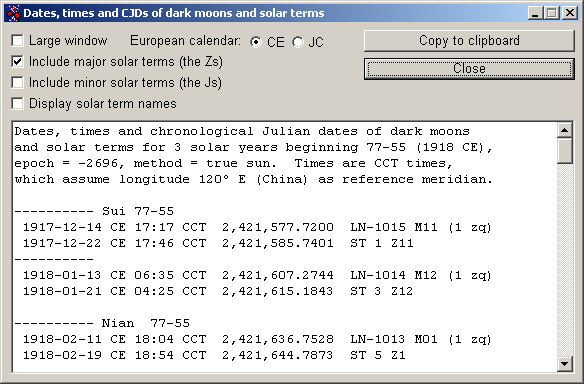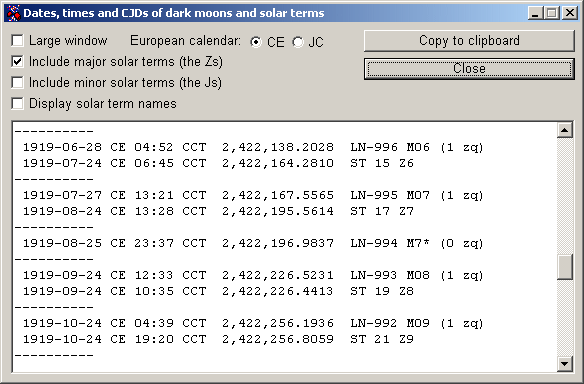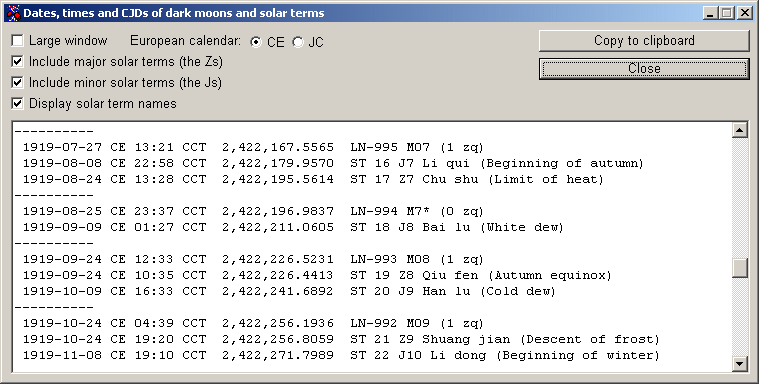|
Suppose 'China' has been selected as the country (reference longitude 120°E, and the date 1919-08-25 CE has been entered, so that Chinese times are CCT.

Clicking on the 'Dates/times/CJDs of dark moons & solar terms' button brings up a window with the dates and times and Julian dates of the dark moons and the solar terms in the year currently displayed (1919) and in the preceding and succeeding years (the display actually begins with some dates at the end of the year two years before the current year).

The line 1917-12-14 17:17 CCT 2,421,577.7200 LN-1015 M11 (1 zq) tells us that the sui 77-55 began on 1917-12-14 (Julian day number 2,421,577) with the dark moon beginning lunation -1015, and that this was the beginning of month 11 in the lunar calendar, a month which contained exactly one zhong qi (a.k.a. major solar term). The exact time of the dark moon was 17:17 CCT.
The next line 1917-12-22 17:46 CCT 2,421,585.7401 ST 1 Z11 tells us that solar term 1 began on 1917-12-22 (Julian day number 2,421,585) and that this solar term contained the zhong qi (a.k.a. major solar term) Z11. Z11 is the winter solstice (which always occurs in the first month of a solar year). The exact time of the winter solstice was 17:46 CCT.
Scrolling down to 1919-08-25 we see:

The preceding line 1919-08-24 13:28 CCT 2,422,195.5614 ST 17 Z7 tells us that solar term 17 began on 1919-08-24, hence the solar term number and day number of 1919-08-25 must be 17-02, as it is (see above).
You can also get all the solar terms (J's as well as Z's) and their names by checking the appropriate boxes, e.g.:

The CE/JC dates and Julian day numbers in the output assume a prime meridian other than zero degrees longitude, such as 120 degrees East (which gives CCT times). With a prime meridian of 120 degrees East, Chinese times are eight hours different from those assuming the prime meridian to be zero degrees.
Consider, for example, the dark moon occurring on 2004-01-21 CE at 21:05 GMT. This dark moon marks the first day of the first month of a wood-monkey year. But it occurred at 2004-01-22 CE 05:05 CCT, so it is shown in the output "JDN of dark moons and solar terms" as associated with 2004-01-22, even though, if one assumes a prime meridian of zero degrees, the dark moon occurred on 2004-01-21. This will be understood better if it is remembered that the Common Era Calendar is slightly different when used in England than when used in China, since days in its Chinese use begin eight hours earlier than days in its English use. In this case the dark moon occurs on the evening of January 21st in England, but on the morning of January 22nd in China.
| Next: Delta T | |
| Contents | Hermetic Systems Home Page |